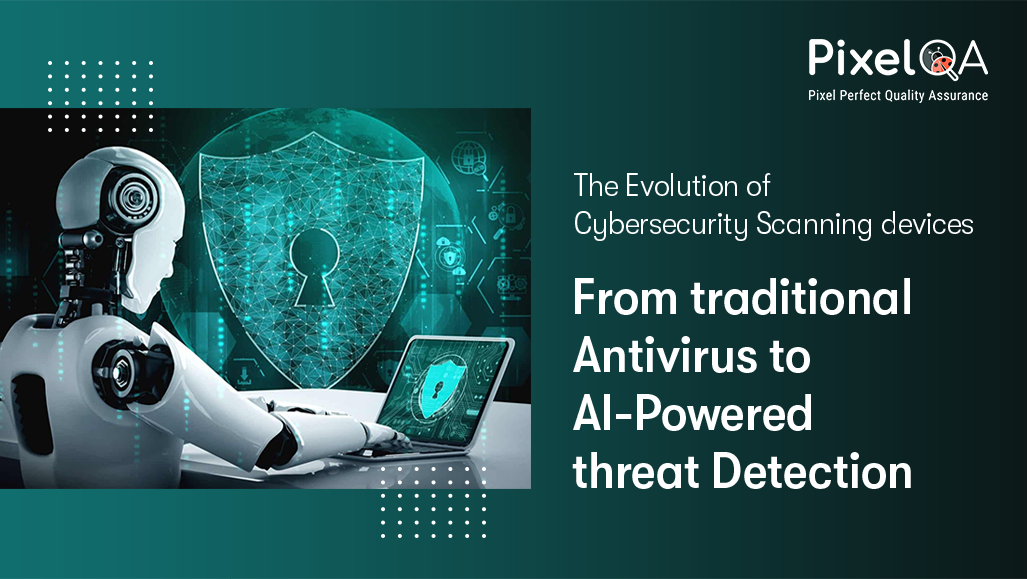
In our connected global of today, cybersecurity is extra essential than ever. The rapid growth of virtual structures and the growing complexity of cyberthreats have made safeguarding our devices and facts an extravagance difficulty. System Testing Services, along with cybersecurity scanning devices, which have superior substantially over the years, are many of the most essential pieces of equipment for protecting in opposition to those threats.
In this blog, we’ll explore the journey of cybersecurity scanning devices, from conventional antivirus software programs to the AI-powered threat detection structures we rely on nowadays. We’ll additionally study how those advancements have made a distinction in maintaining our personal and enterprise facts secure.
Table of Contents
- The Birth of Antivirus Software
- The Rise of Malware and the Need for Advanced Protection
- The Emergence of AI in Cybersecurity
- Machine Learning and Behavioral Analytics
- Real-Time Threat Detection and Prevention
- The Role of Cloud and IoT in Cybersecurity
- The Future of Cybersecurity Scanning Devices
- How to Choose the Most Effective Tool for Vulnerability Scanning
- Conclusion
The Birth of Antivirus Software
Again, inside the early days of the internet, malware and viruses were far less complicated. The virtual landscape has become much less complicated, and most cyber threats were fantastically clean to locate and neutralize. This brought about the creation of the first antivirus programs, which had been designed to test and dispose of primary viruses from computer systems.
These early antivirus applications, like Norton Antivirus and McAfee, broadly speaking, used signature-primarily based detection. This indicates they trusted a database of recognized virus signatures, or patterns, to identify and thwart threats. At the same time as this worked for some time, it quickly became clear that cybercriminals were becoming greater advanced and sneaky in their attack.
The Rise of Malware and the Need for Advanced Protection
As the internet grew, so did the sophistication of cyber threats. Malware evolved to become extra complex, regularly hiding in plain sight or the use of a couple of strategies to keep away from detection. Viruses started to mutate, and hackers discovered new ways to bypass conventional antivirus software.
This brought about the development of heuristic evaluation and the development of signature-based detection. Heuristic analysis enabled scanning gadgets to look for uncommon or suspicious conduct within documents or applications, no longer just recognized virus signatures. This allowed antivirus software to hit upon more recent, formerly unknown threats, even if they weren’t inside the virus database.
However, with the increasing quantity and complexity of assaults, even heuristic analysis began to conflict. Cybercriminals commenced the use of extra advanced strategies like polymorphism (in which the virus adjusts its code on every occasion it infects a brand-new gadget) and document-less malware (which doesn’t leave lines on the hard drive). The limitations of traditional antivirus software programs have become clear, and this sparked a new wave of innovation.
The Emergence of AI in Cybersecurity
AI-powered scanning devices have revolutionized cybersecurity by moving away from the conventional signature-based totally and heuristic techniques. Rather than relying on predefined regulations, AI can analyze sizable amounts of facts in real-time, detect unusual patterns, and perceive threats more appropriately. By means of constantly getting to know from new statistics, AI structures can locate both recognized and unknown threats, even 0-day vulnerabilities (exploits that hackers use before builders have a chance to patch them).
One of the key blessings of AI-powered danger detection is its potential to pick out complicated, multi-level attacks. For example, AI can recognize when an attacker is trying to gain admission to a gadget through phishing emails, amplify privileges inside the community, and deploy ransomware. This ability to tune and understand the complete lifecycle of an assault is something traditional scanners were not designed to do.
Machine Learning and Behavioral Analytics
A subset of AI that has considerably impacted cybersecurity is machine learning (ML). Systems getting to know algorithms may be skilled on huge datasets to understand patterns in network site visitors, user behavior, and device usage. As those algorithms analyze extra data, they emerge as higher at identifying diffuse signs of malicious interest.
for instance, an ML-powered scanning device ought to detect whilst a consumer is having access to documents they generally don’t, or whilst there’s unusual information transfer activity. those behaviors can also sign a compromised account or the presence of an insider danger. Behavioral analytics additionally facilitates reducing false positives, that's a common assignment in conventional cybersecurity scanners.
Unlike conventional strategies that focus on predefined regulations, device studying focuses on what's normal and what is not. This lets in for extra accurate detection of both new and vintage kinds of threats.
Real-Time Threat Detection and Prevention
One of the most important advancements that AI-powered scanning devices have delivered to cybersecurity is real-time hazard detection and prevention. conventional antivirus packages should only come across malware during scans, which means that new or evolving threats may want to cross ignored till the subsequent scan.
In contrast, contemporary AI-powered scanning devices work in actual-time, constantly monitoring community visitors, person behavior, and device activities for any signs of malicious conduct. This proactive approach guarantees that threats are detected earlier than they can cause vast damage.
As an instance, if a hacker attempts to infiltrate a network via exploiting a vulnerability, the AI device can discover this attempt in real time, block the assault, and alert administrators right away. This type of instant reaction is important in these days' speedy-paced digital surroundings, in which delays of even a few seconds can result in extreme outcomes.
The Role of Cloud and IoT in Cybersecurity
As cloud computing and the network of things (IoT) have ended up greater widespread, cybersecurity scanning devices have needed to adapt. The cloud has transformed how agencies shop and get access to records, and IoT devices have added new capabilities and vulnerabilities to everyday existence.
AI-powered cybersecurity gadgets are ideal to address the demanding situations posed by these technologies. Cloud-primarily based AI solutions can offer scalable safety across a couple of devices, no matter what region. This is especially important for groups with far-flung personnel or for those who rely on cloud-primarily based storage answers.
in addition, IoT devices are regularly targeted via cybercriminals because of their capability safety flaws. AI-powered scanning gadgets can discover unusual behavior in IoT gadgets, like a clever thermostat all of sudden communicating with an unknown server, signaling a potential hack.
The Future of Cybersecurity Scanning Devices
The field of cybersecurity keeps evolving, and so too do the equipment and technology designed to shield our data. As AI and systems gain knowledge of retain to enhance, we can anticipate even extra sophisticated cybersecurity scanning devices to emerge.
As an example, AI may also soon be able to predict cyberattacks before they occur by studying patterns in huge datasets from worldwide resources. Moreover, quantum computing may also play a role in revolutionizing cybersecurity, taking into consideration the improvement of unbreakable encryption and more desirable threat detection skills.
Another exciting development is the integration of AI-powered protection structures with other technologies like blockchain. Blockchain can provide a secure, tamper-evidence manner to keep and share records, while AI can display and guard the transactions in real time.
How to Choose the Most Effective Tool for Vulnerability Scanning
Choosing the best cybersecurity scanning tool might be difficult with so many options on the market. When choosing a scanner, you need to take into consideration factors like:
- Type of device: Are you protecting a personal computer, a business network, or IoT devices?
- Real-time protection: Does the device offer constant, proactive threat detection?
- Behavioral analysis: Does it use AI or machine learning to identify abnormal activity?
- Cloud integration: Does it provide cloud-based protection for remote workforces or multiple devices?
In the long run, the first-rate cybersecurity scanner is one which suits your specific needs and adapts to rising threats.
Conclusion
Incredibly, cybersecurity scanners have evolved from simple antivirus software to complex AI-powered solutions that can immediately identify and stop cutting-edge attacks. The development of machine learning, analytics of behaviors, and cloud-based solutions has significantly improved our capacity to secure data and devices, especially for a Software Testing Company that relies on robust security measures.
Ongoing, though, is the battle against cyberthreats. The methods employed by cybercriminals will advance along with technology. Understanding how cybersecurity scanners have evolved might help us better appreciate how crucial it is to use the appropriate tools to be safe in the increasingly digital world.
About Author

Rushi Mistry is a Security Tester at PixelQA with a focus on cybersecurity. He is passionate about IoT penetration testing and is working towards obtaining a CISSP certification, with the ultimate goal of becoming a Chief Information Security Officer (CISO).

_638780474661639650.png)